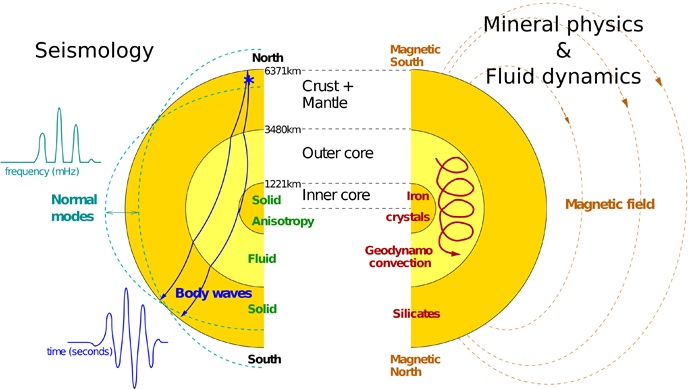Research
Seismic tomography maps the deep interior of the Earth, elucidating the internal structure and dynamics of our planet. Ultimately, the connection between seismology, geochemistry, mineral physics, fluid mechanics and geodynamics should provide a complete and consistent picture of the way in which the Earth convects and evolves. However, we are still far from that understanding and many fundamental questions remain unanswered. For example, geochemical arguments favour an isolated lower mantle, while seismic tomography suggests that the upper and lower mantle are continually mixing. It remains unclear if seismically observed heterogeneities in various regions of the mantle are caused by thermal or compositional differences. Seismological constraints on the amount and distribution of inner core anisotropy vary greatly and conflicting theories exist concerning its origin.
As a global seismologist, I am keen to address these issues by developing new theoretical methods and using these to discover structures in the Earth’s deep interior, ranging from the upper mantle to the inner core. At the same time, I am directing my research towards data and models incorporating other fields such as mineral physics, geochemistry and fluid dynamics, since I believe that most important and exciting discoveries are made at the boundaries between disciplines.
